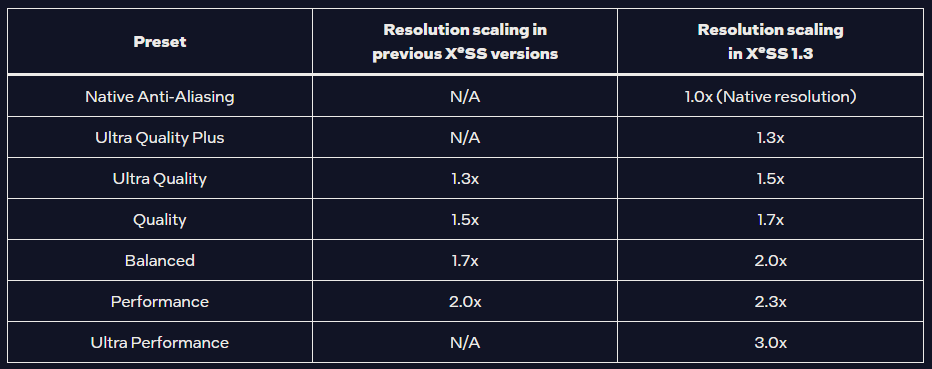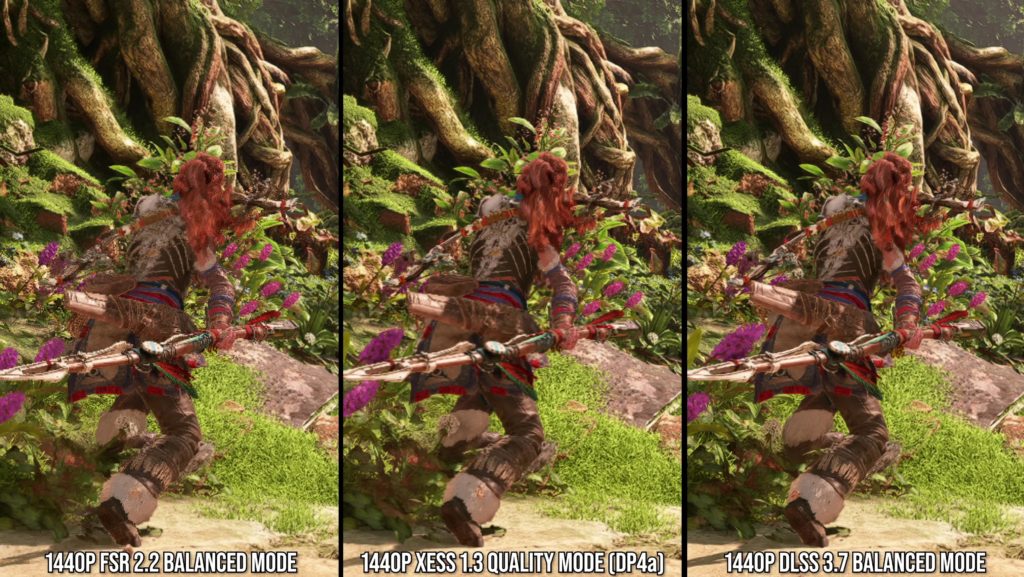Upscaling technologies have become an integral part of modern games, since rendering at native resolution is often too demanding, and upscaling from a high enough resolution can look almost as good. But there are many methods, and Alex Battaglia from Digital Foundry in a new video shed light on three main ones: DLSS from Nvidia, FSR from AMD and XeSS from Intel.
But before we get into that, we need to clarify what these technologies actually are. Thus, Battaglia offered a clear picture that simply explains the differences. AMD’s FSR is usually the worst of the three in terms of quality, but it works on almost every graphics card. Next up is XeSS, but it comes in two versions: DP4a, which runs on most modern GPUs, and XMX, which uses custom AI compute cores only available on Intel graphics cards. Both versions generally offer better quality than FSR, but XMX is understandably slightly better. It has the highest quality in most DLSS games, but can only be enabled on Nvidia’s RTX graphics, which is the RTX 20 series and above.
Battaglia spent most of his time in the video on XeSS, since Intel recently released version 1.3, which brought some pretty significant improvements. But it must be said that it is not officially in the games yet, and Battaglia only replaced the .dll file, just as it can be done using DLSS. As seen in the footage from Horizon Forbidden West, XeSS 1.3 DP4a has significantly reduced ghosting, improved overall anti-aliasing and, for example, eliminated annoying choppy cloud movements entirely. On the other hand, for example, a slight shimmer of a certain part of the vegetation is added. Battaglia also found similar improvements in the XMX version.
The comparison took place primarily in modes that had the same input resolution. It should be noted here that Intel changed the labeling in version 1.3, as we already wrote about in an earlier article. Essentially, the mode names have moved up one position so that the names no longer match DLSS and FSR. From the “Balanced” mode – “Quality”, from “Performance” – “Balanced” and so on. Ultra Performance mode, Ultra Quality Plus mode, as well as native AA have been added.

Nvidia also shared some news with the recent release of DLSS 3.7. The main change is the addition of a preset labeled E, which can be turned on manually, and it removes the very annoying blur in some games, such as Avatar: Frontiers of Pandora. But Battaglia didn’t find any other big improvements.
Finally, it comes to a real comparison of all the technologies in motion, in the games Horizon Forbidden West and Ratchet & Clank: Rift Apart. Basically, what was said at the beginning of the video was confirmed. The FSR image is heavily pixelated and over-sharpened, XeSS causes much less pixelation (while the XMX version is better than DP4a), but DLSS provides the highest detail retention and best anti-aliasing.

In any case, it must be added that AMD is also preparing a new version of its upscaling. FSR 3.1 was introduced at the end of March and promises better picture quality in motion, which has long been the technology’s biggest problem. It should be deployed in the first games of the second quarter, and one of them will be Ratchet & Clank: Rift Apart.
Source : Zing

